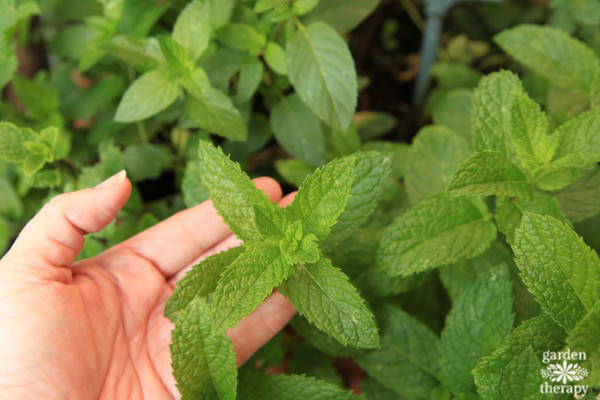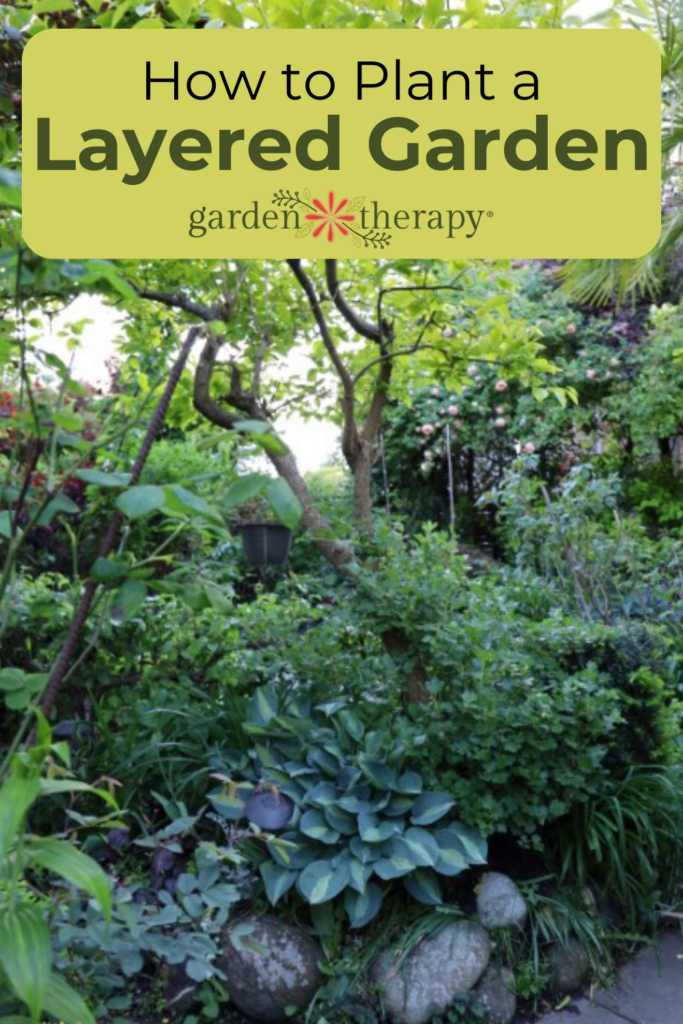At some point, annual veggies took over the popularity contest. We’re so used to seeing neat rows of carrots, cucumbers, beans, and tomatoes that we forget there are other more beneficial ways for the home gardener to grow food. Let me introduce the layered garden to you!
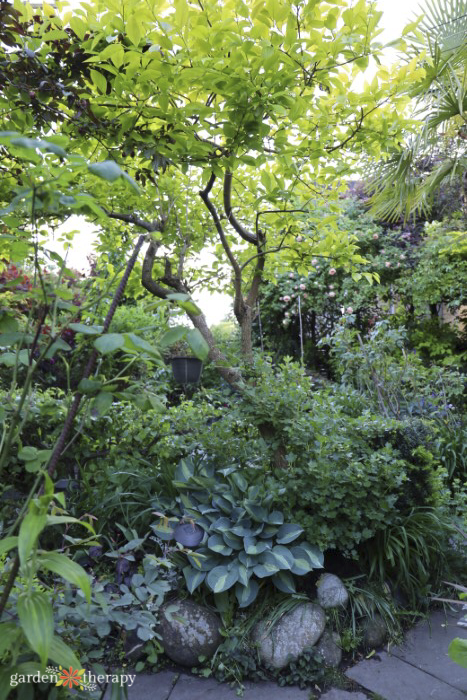
I’m in the midst of planning my next garden at my new house, and I’m thinking big picture. The yard was neglected and minimal, so I’m starting with a pretty well-blank canvas.
I’ll be designing a food forest, which takes some careful planning and a few years of patience. I have an urban garden and a small yard, but even those with a patio garden can employ these more sustainable, regenerative practices.
Christina Chung’s book, The Layered Edible Garden, is based on a concept similar to food forests. Rooted in permaculture, it’s all about maximizing your space with a layered garden based on edible perennials.
These practices are rooted in the same values and energy, so I’m thrilled to share Christina’s approach to the edible garden with you.
- What is a Layered Garden?
- Why Layered Gardens Are the Way to Go
- Who Should Plant a Layered Garden?
- How to Start a Layered Garden
- The “Layers” of a Layered Garden
- Canopy Tree Layer
- Subcanopy Layer
- Shrub Layer
- Herbaceous Perennial Layer
- Climber Layer
- Annual Layer
- Ground Cover Layer
- The Rhizosphere Layer
- More Tips for Growing Food in Urban Spaces
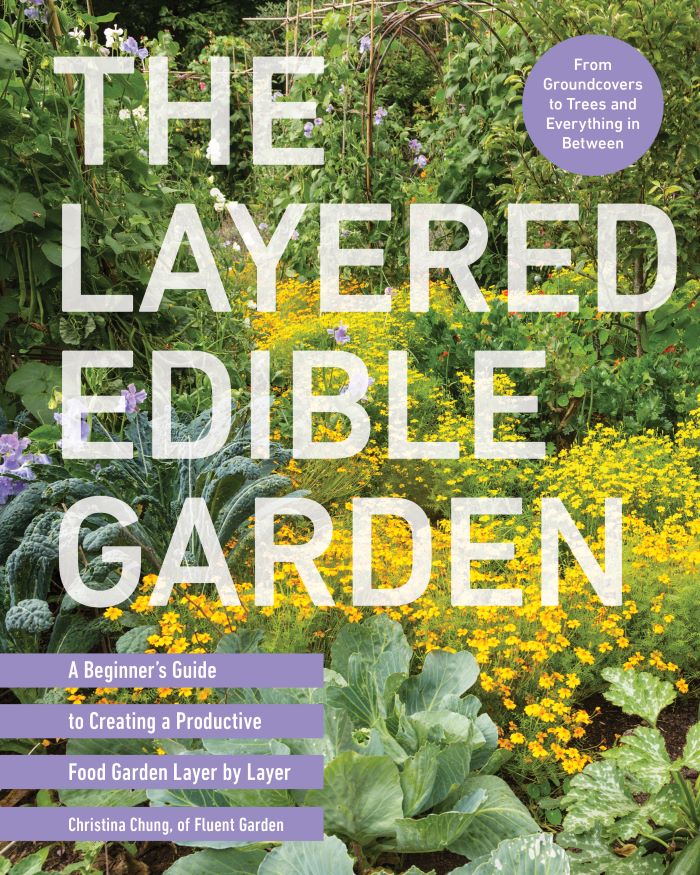
Quotes reprinted with permission from The Layered Edible Garden by Christina Chung © 2024. Published by Cool Springs Press.
What is a Layered Garden?
There are many kinds of layered gardens. They are often well-planned and optimize space by combining plants with different heights.
Christina’s layered gardening practice follows a more natural system that’s less intensive on time, energy, and resources. It tries to fill in all the empty spaces in the garden that weeds might otherwise overtake.
“Traditional gardening often means fighting against nature taking over the space and turning it back into the thickly planted, layered space it would be without human intervention,” says Christina.
But a layered garden is also curated. This means it still produces plenty of food similar to traditional veggie gardens. However, it encourages you to think beyond the traditional veggies and focus more on edible perennials.
It follows permaculture practices and sounds very similar to my beloved food forest practice. But Christina’s approach is “more flexible” and perhaps more focused on gardens with small spaces.
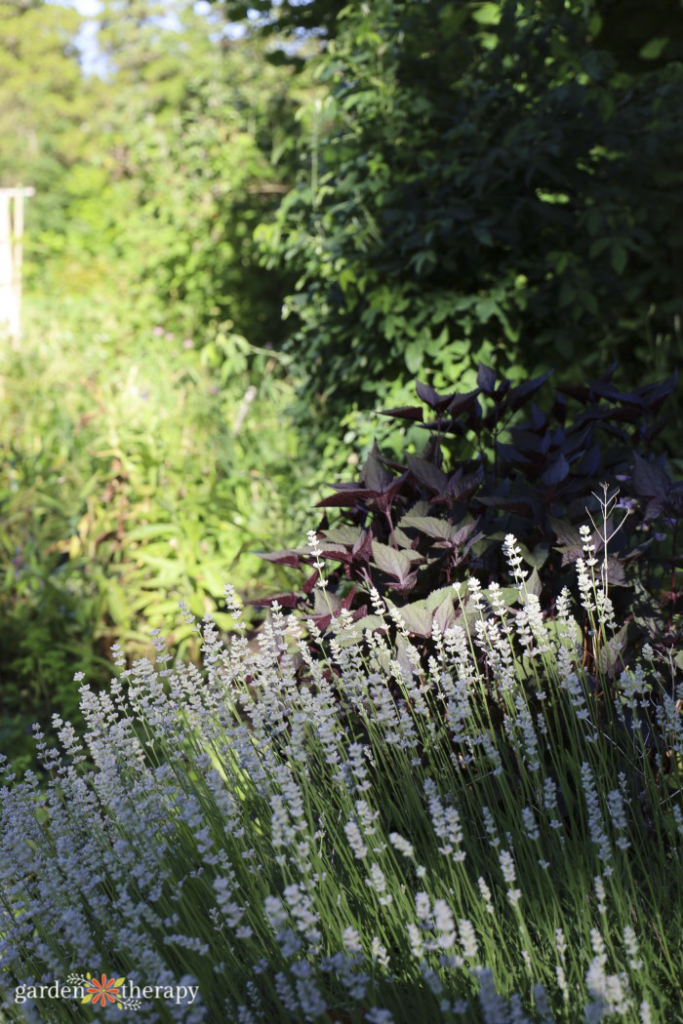
Why Layered Gardens Are the Way to Go
One of the biggest draws of a layered garden is that it optimizes your space. Many gardeners (myself included) are always looking for more gardening space. But many of us don’t consider the vertical spaces and the gaps. Just think how much you could plant under a tree or shrub!
“Filling in those missing layers creates so much more interest and beauty, and each one offers a chance to add something edible to the mix,” says Christina. “Each added layer can help you get more out of your existing garden space.”
Layered gardening is also great for your local wildlife. Planting a wider range of plants and less common species may attract more pollinators and beneficial bugs. They even act as bonus natural pest control.
One of the most immediate benefits you’ll notice is how much more low-maintenance layered gardening is. A fuller garden means less weeding, which is also great for soil health as it minimizes soil disturbances.
These gardens also rely on perennials more, requiring less seed starting and babying tender young annuals. You will even water less as you rely on perennials more.

Who Should Plant a Layered Garden?
I highly recommend layered gardens for those in an urban setting, as they’re great for those with limited space. It’s just one of the best ways to grow more food in a small space.
But absolutely anyone and any space can practice layered gardening.
It’s great for food gardeners and cooks but will also work for those who want a beautiful space. You can also have a most ornamental layered garden with food options. Or use this method to create a more lush space and minimize empty space.
“This is also a gardening style if you want to be creative and build a garden space that doesn’t look like everyone else’s in your neighbourhood,” says Christina. “Landscapes often take on a depressing sameness, with each garden featuring the same ten plants that are cheaply available at every nursery and big-box store.”
Rather than having distinct rules and practices, layered gardening is more of an overall approach. This means that anyone can benefit and grow from having a layered garden.
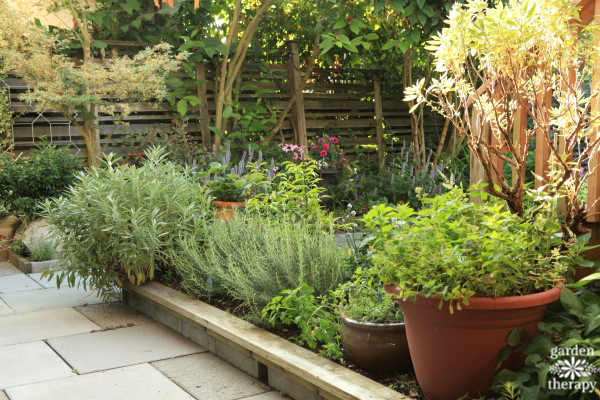
How to Start a Layered Garden
The first mindset shift of a layered garden is focusing more on perennials. These will naturally fill in the space with larger trees and shrubs and, as mentioned, require significantly less maintenance and resources.
Since annuals only grow in one season, they require significantly more work. “Supporting all of that quick growth means annuals need more resources,” says Christina. “That means more fertilizer, more water, and richer soil to grow in.”
Perennials also provide year-round interest, have longer harvest seasons, and support the local ecosystem. Yes, perennials will take several years to establish themselves and produce food. But down the line, it’s so little work.
When starting your layered garden, start small and work your way up. Don’t try to overhaul the whole garden in one season. Pick one area and start with that.
Before you rip our existing garden, plan out your layers and consider how you want to use your space. Make sure it’s still enjoyable and that you’re growing what you’re most interested in.
Start with the tallest layer, as this will affect the others. For instance, a large tree could create more shade, and you must ensure all plants match your garden’s conditions.

The “Layers” of a Layered Garden
It’s time we start planning out our layers! I’ll give you a little breakdown of all the different layers, but check out Christina’s book for an in-depth look at the layers and some suggestions on what to grow.
Canopy Tree Layer
Your tallest layer begins with the tallest trees. There’s a good chance you already have large trees on your property or your city boulevard. In most cases, you stick with what you have.
“These are the large trees, reaching over 40 feet (12 m) tall, making them the layer that casts the most shade and has the greatest impact on the rest of your garden space,” says Christina.
If you don’t have any large trees or are starting a garden completely from scratch, the canopy tree layer is one of the biggest decisions in starting your layered garden.
Here are a few examples of canopy trees from Christina:
- Pine
- Sugar maple
- Linden
- Walnut
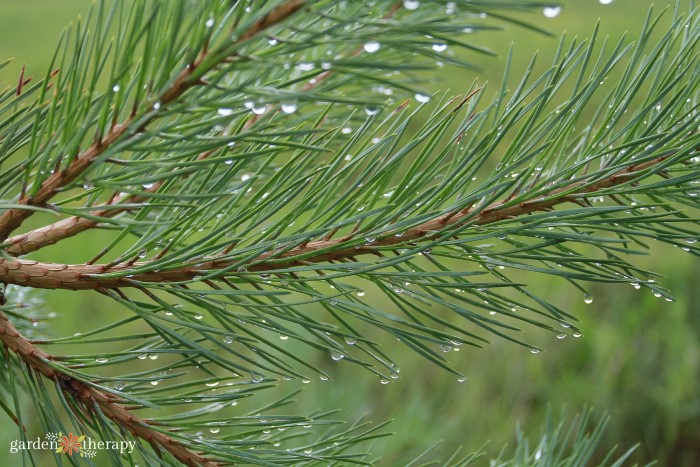
Subcanopy Layer
Your subcanopy layer consists of small trees. Most common fruit trees fall under this category. They take time to get established and bear fruit, but once they do, they provide plenty of food and year-round beauty.
Christina suggests putting these trees on the edge of your property. “Use subcanopy trees where you need beneficial shade and to gain extra height and screening from foliage, where you want a more compact package than a larger canopy tree,” she says.
Here are a few examples from Christina of subcanopy trees
- Hazelnut
- Black mulberry
- Quince
- Dogwood
- Apple and crabapple
- Magnolia
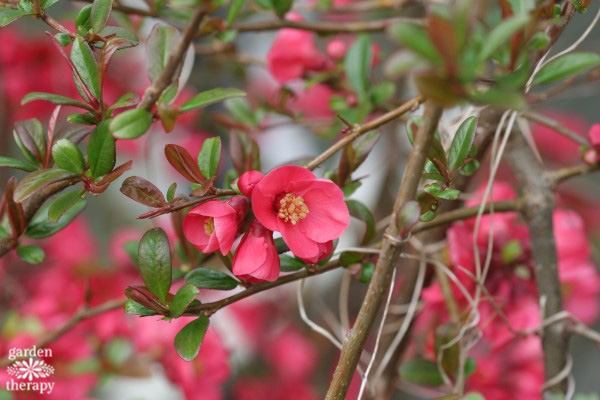
Shrub Layer
The shrub layer is one of the most prolific and versatile layers. Many shrubs can be edible, beautiful, and also work as privacy screens.
Many of us already have shrubs in our backyards. And we love them because they’re so low maintenance and easy to work with.
Here are a sample of shrubs from Christina:
- Blueberries
- Goji berry
- Bay laurel
- Pomegranate
- Black chokeberry
- Rose
- Rosemary
- Raspberry
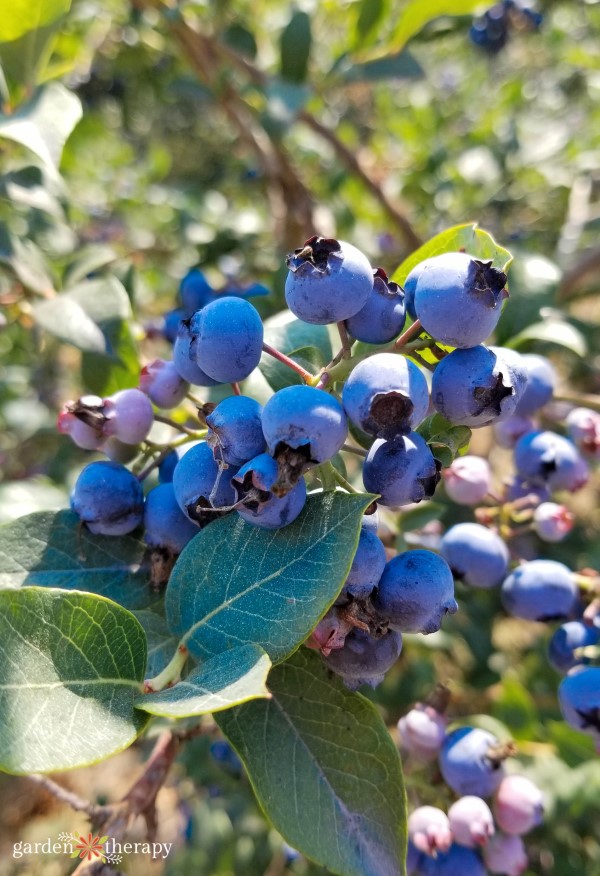
Herbaceous Perennial Layer
Your herbaceous perennial layer consists of a lot of perennial vegetables and herbs.
“These plants are smaller than shrubs, so you can pack many of them in even the smallest garden,” says Christina. “There are also many species and varieties to choose from, with lots of edible options.”
Here is a handful of options for this layer:
Climber Layer
One of the best ways to use vertical space is by including some climbers in your garden.
“Every building on your property has empty walls that could be covered with beautiful and delicious climbers,” says Christina. You can also create spaces just for your climbers, such as trellises, pergolas, and gates. There are many ways to beautify and utilize a climber.
Here is a sampling of some climbers:
- Kiwi
- Passionflower
- Hops
- Runner bean
- Grapes
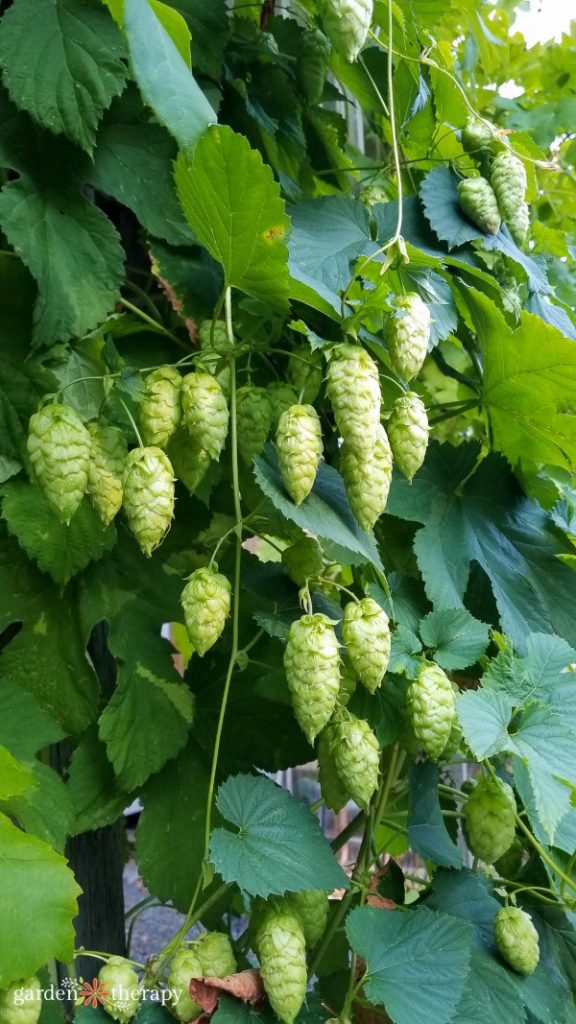
Annual Layer
Yes, there is still room for your traditional veggie garden. After all, how else will you delight in the taste of a freshly grown tomato?
“Annual crops can also be a great option to fill empty spaces in time,” says Christina. “Most of your herbaceous layer will be dormant in the winter, leaving a bare and inedible garden.”
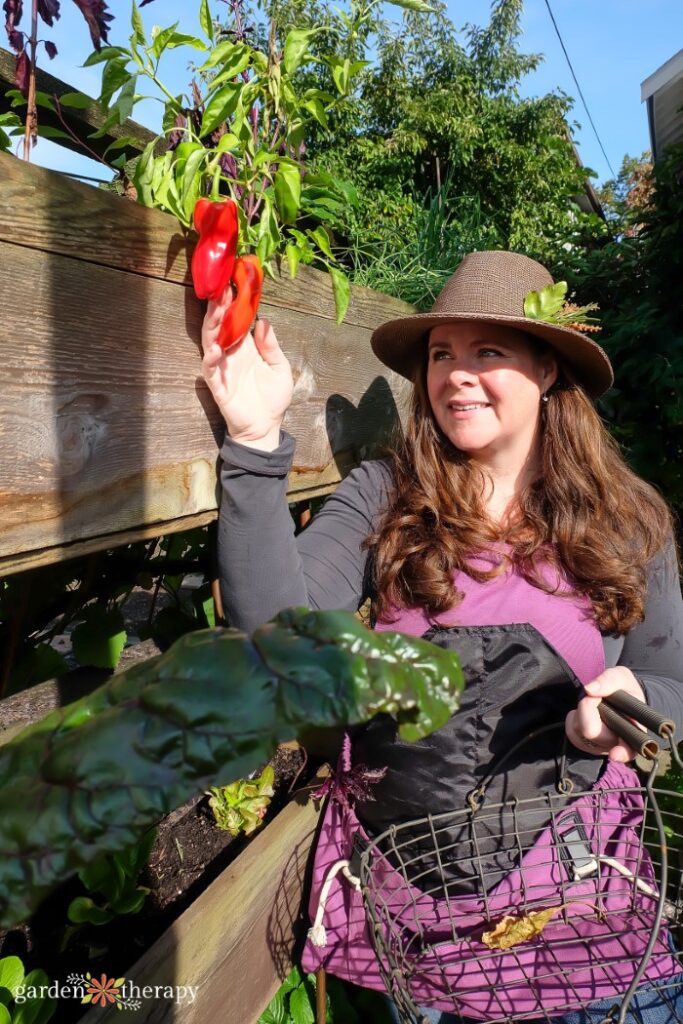
Ground Cover Layer
The low level of the garden shouldn’t be discounted either. Most think of a lawn, but there are more options.
Christina says, “Small, low-growing, carpeting plants play a key role in protecting the soil from erosion and summer heat while also eliminating places for weed seeds to germinate.”
Here are some ground cover options:
- Wild strawberry
- Wild ginger
- Wintergreen
- Thyme
- Nasturtium
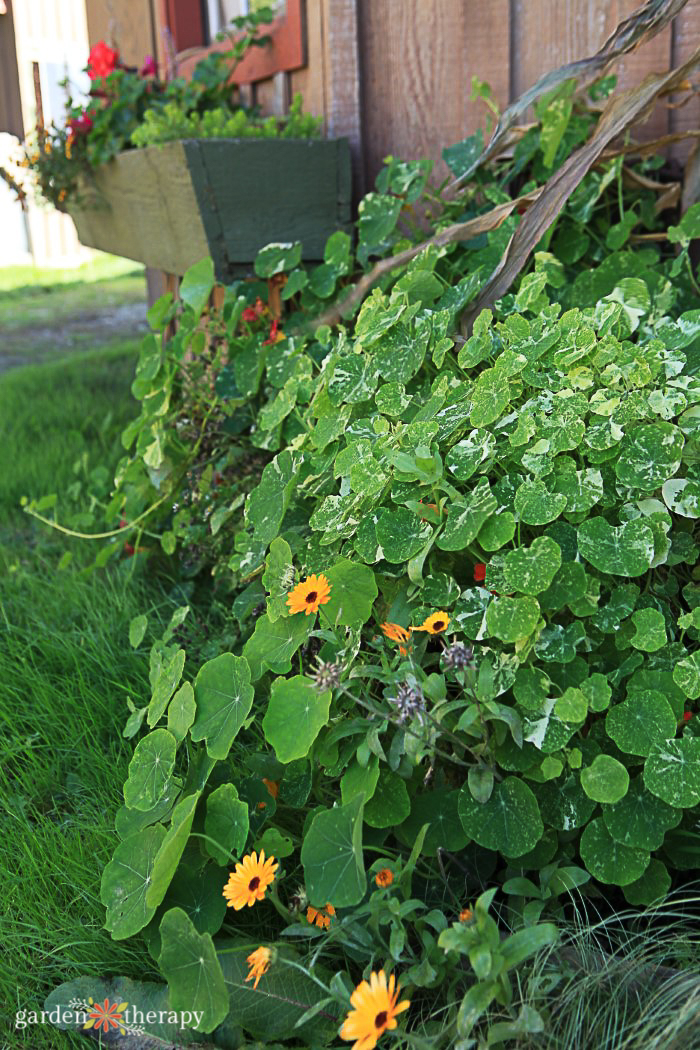
The Rhizosphere Layer
Another layer? Yes! There is also plenty going on below the surface. There are many edible and medicinal roots out there. The top of the plant may also contribute to a different layer.
It should be noted that you do need to disturb the soil to plant these veggies. “Choose locations that you can access easily, such as the perimeter of beds or the back of a border,” says Christina.
Here are some examples of edible roots:
- Sunchoke
- Oca
- Taro
- Onions
- Radish
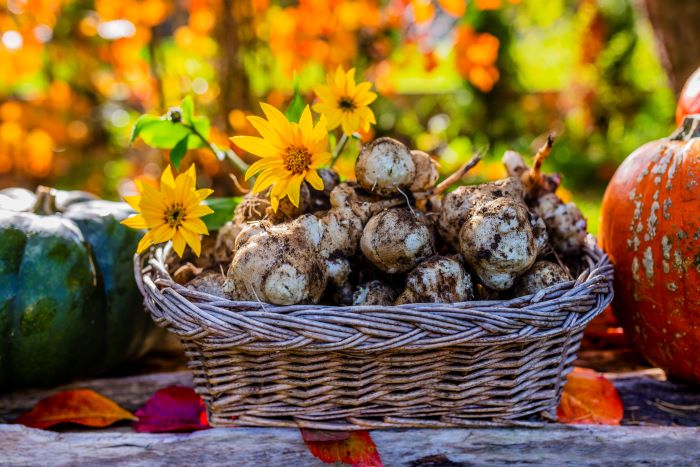
And that covers all the layers! For more on this very cool practice of making an edible layered garden, be sure to check out Christina’s book.

